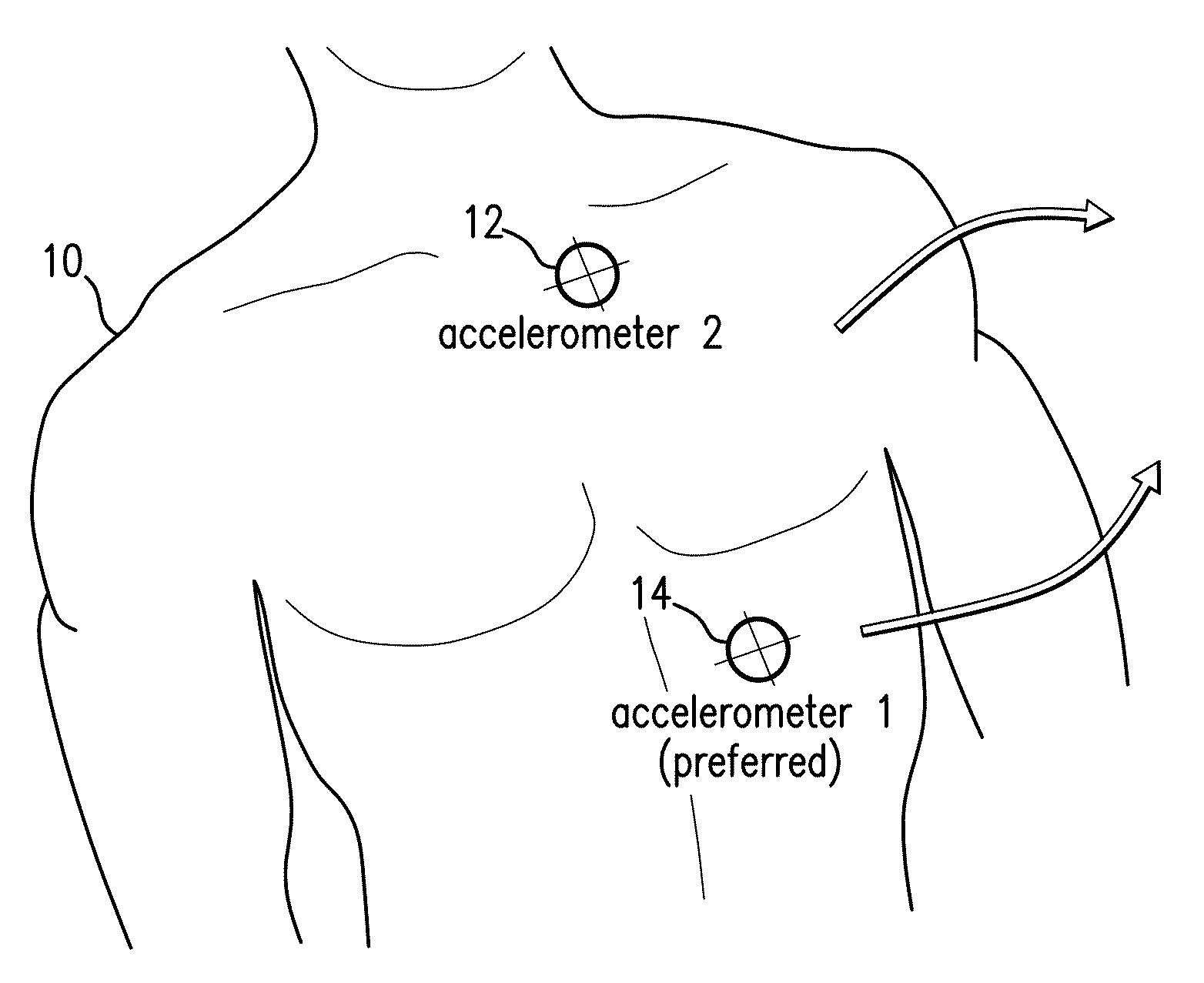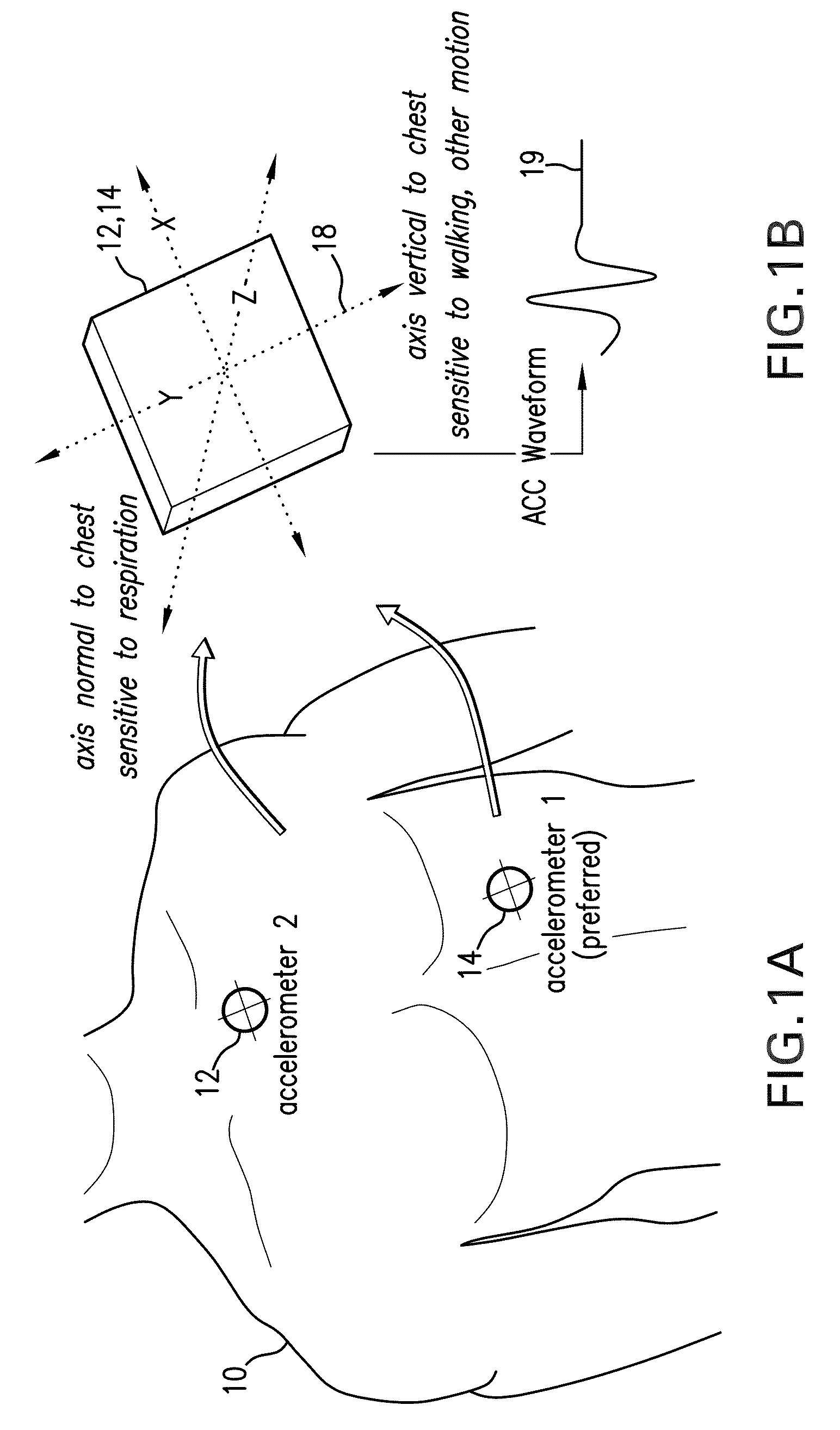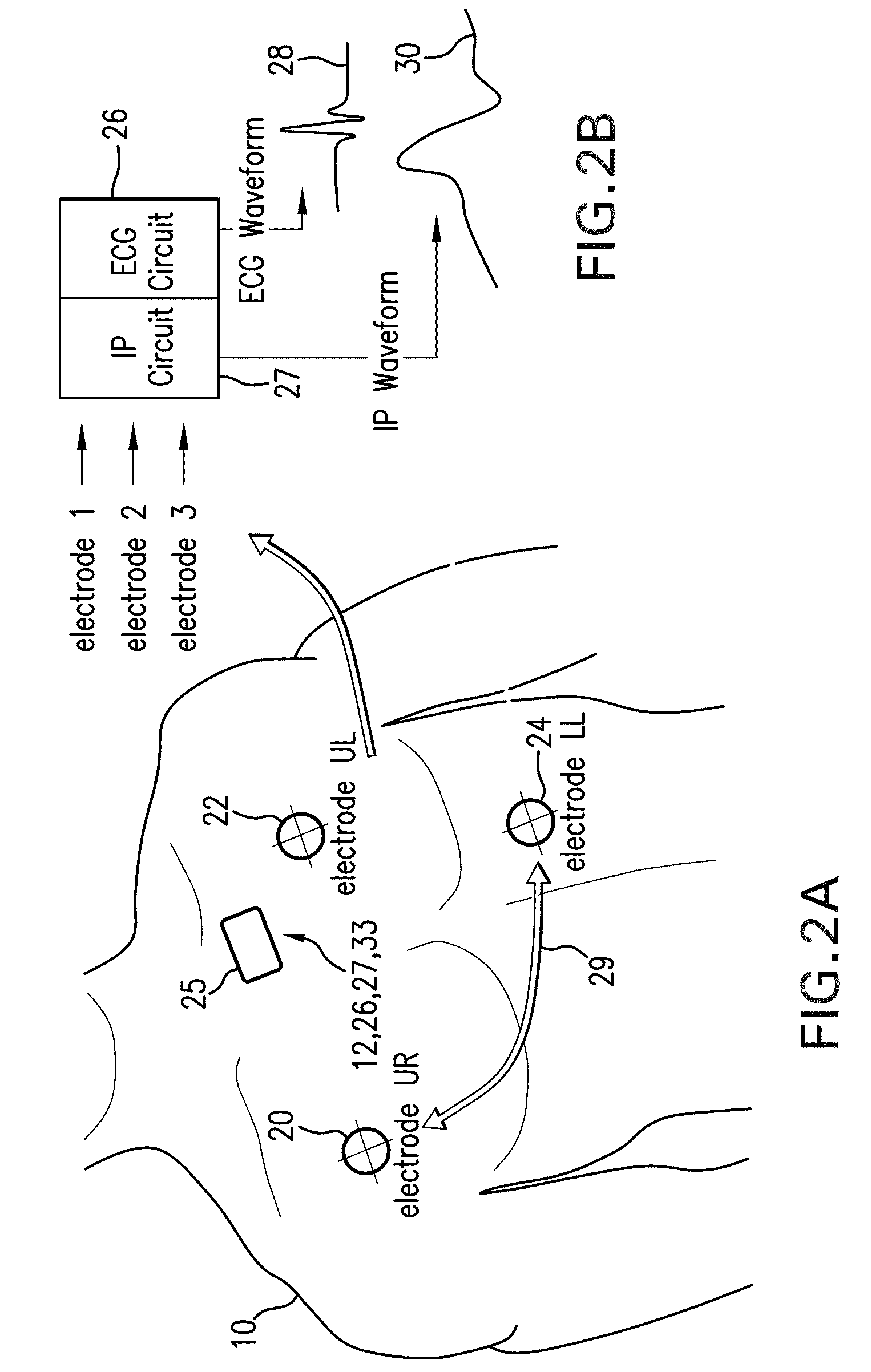Body-worn monitor for measuring respiration rate
a monitor and body technology, applied in the field of body-worn monitors, to achieve the effect of reducing false alarms, accurate measurement of rr, and improving true positive alarms
- Summary
- Abstract
- Description
- Claims
- Application Information
AI Technical Summary
Benefits of technology
Problems solved by technology
Method used
Image
Examples
Embodiment Construction
Sensor Configuration
[0074]Referring to FIGS. 1A and 1B, a pair of accelerometers 12, 14 attach, respectively, to the chest and abdomen of a patient 10 to predict RR through the patient's torso movement and an algorithm based on adaptive filtering. Each accelerometer 12, 14 simultaneously measures acceleration (e.g. motion) along x, y, and z axes of a local coordinate system 18. As shown in FIG. 1B, the accelerometers 12, 14 are preferably aligned so the z axis points into the patient's torso. Within each accelerometer 12, 14 is an internal analog-to-digital converter that generates a digital ACC waveform 19 corresponding to each axis. Waveforms are sent as a stream of digital data to a wrist-worn transceiver (shown, for example, in FIGS. 27A, B, and 28) where they are processed using an adaptive filtering algorithm described in detail below to determine the patient's RR. Alternatively, the adaptive filtering algorithm can be performed with a microprocessor mounted proximal to the ac...
PUM
 Login to View More
Login to View More Abstract
Description
Claims
Application Information
 Login to View More
Login to View More - R&D
- Intellectual Property
- Life Sciences
- Materials
- Tech Scout
- Unparalleled Data Quality
- Higher Quality Content
- 60% Fewer Hallucinations
Browse by: Latest US Patents, China's latest patents, Technical Efficacy Thesaurus, Application Domain, Technology Topic, Popular Technical Reports.
© 2025 PatSnap. All rights reserved.Legal|Privacy policy|Modern Slavery Act Transparency Statement|Sitemap|About US| Contact US: help@patsnap.com



